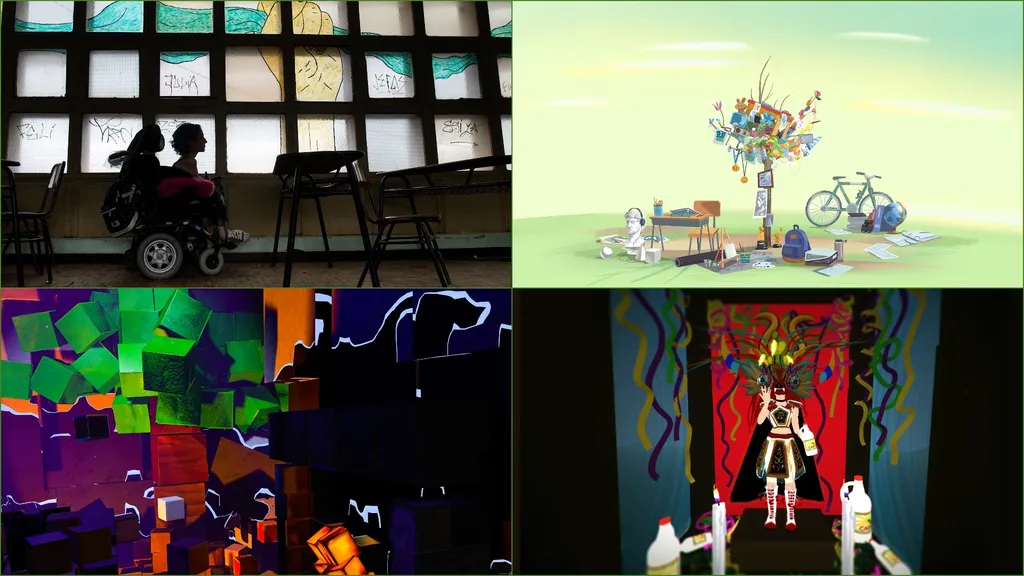The Sundance Film Festival has, for many years now, proved a useful means of gauging the state of VR filmmaking early on in the year. The problem is that, even after all this time, the story hasn’t changed all that much.
2021’s modest selection of VR movies — seven of the 14 total projects in this year’s New Frontier selection — do feature some experiences much longer than those seen at previous iterations of the festival. There are also a lot of new faces mixed in with the old and topics continue to wrestle with modern affairs in brave and often striking ways. But my takeaway from this year’s selection reaches an all-too-familiar conclusion; wonderous potential, genuine enthusiasm and arresting innovation are at war with budget constraints, technical proficiency and films that, frankly, don’t need to be in VR.
Everything in this year’s selection has at least some sort of spark to it, but most wrestle with at least one of those aspects. The first episode of Michèle Stephenson, Joe Brewster and Yasmin Elayat’s The Changing Same, for example, is a hard-hitting look at racial injustice in the US that immediately zones in on VR’s strengths. It subjects you to a first-hand account of police discrimination, driving home its depiction with one particularly sobering comparison that sees the cast of characters and their actions mirrored in slavery. But scrappy production values that make actors appear like live-action projections on top of 3D models take a toll on immersion.
On the flip side, there’s Namoo, a typically slick and wholly enjoyable piece from Baba Yaga and Invasion! studio, Baobab. The gorgeous animation and eye-opening art help enliven a whimsical short that follows an artist through the highs and lows of his life. But while visual prowess might invite comparisons between Boabab, the holy grail of modern animation that is Pixar, the cliched story beats (which themselves feel too close to one of Pixar’s most cherished works) suggest Baobab narratively still has some way to go before it earns that mantle.
Of the seven films, just one is a live-action, 360-degree piece and that’s the complete four-part series, 4 Feet High VR. It’s a challenging piece intent not so much on breaking taboos as it is hitting them at full-speed and then grinding the shattered shards into dust. Running over 35 minutes, it follows a 17-year-old wheelchair user in Argentina that explores her sexuality amidst her class’s revolt to push for sex education in school. Again, there isn’t much to it that couldn’t have been said just as well — if not better — on a flat-screen, but it does offer a fascinating snapshot into many different struggles on subjects that are easy to take for granted in some parts of the world.
I’ve written before about the considered delivery of London Film Festival Winner To Miss The Ending – a warning to humanity as it races ever-faster towards digitization. I was also smitten with Prison X Chapter 1, an interactive piece that delivered on a potent sense of place as it casts ‘players’ into a Bolivian prison. It uses convincing instances like simply taking a shower or using the prison phones to really root you in its environment and invite exploration and interaction. I wanted to see it tie together better than its first episode affords, but it was my favorite pick of this year’s bunch. You can also check out Ian’s thoughts on the live performance of Tinker right here.
Ever the eclectic collection, then, but a set that suggests VR filmmaking faces the same challenges it did in 2016, even with the advent of the Quest 2. Many of these projects deserve the kind of funding and development skillset that many VR games get, but the commercial opportunity just isn’t there to provide it. Even then, the same existential questions — questions not unique to filmmaking alone — about VR’s real strengths persist. Just as VR gaming is still too attached to its flatscreen counterpart, VR filmmaking continues to reckon with the decades of tradition that preceded it.
I’ve played enough and seen enough to remain convinced there’s a goldmine to uncover, but continue to wonder if creators are digging in the right areas. Five years into the age of consumer VR and I’ve yet to see anyone really capitalize on the narrative gut punch waiting for players at the end of Fated: A Silent Oath, and think that precious few movies have learned the right lessons from the reality-defying wonder of Dear Angelica. Those opportunities, the kind that will really set this medium apart from the others, remain unearthed at Sundance 2021, but I remain optimistic they lie in wait.

























